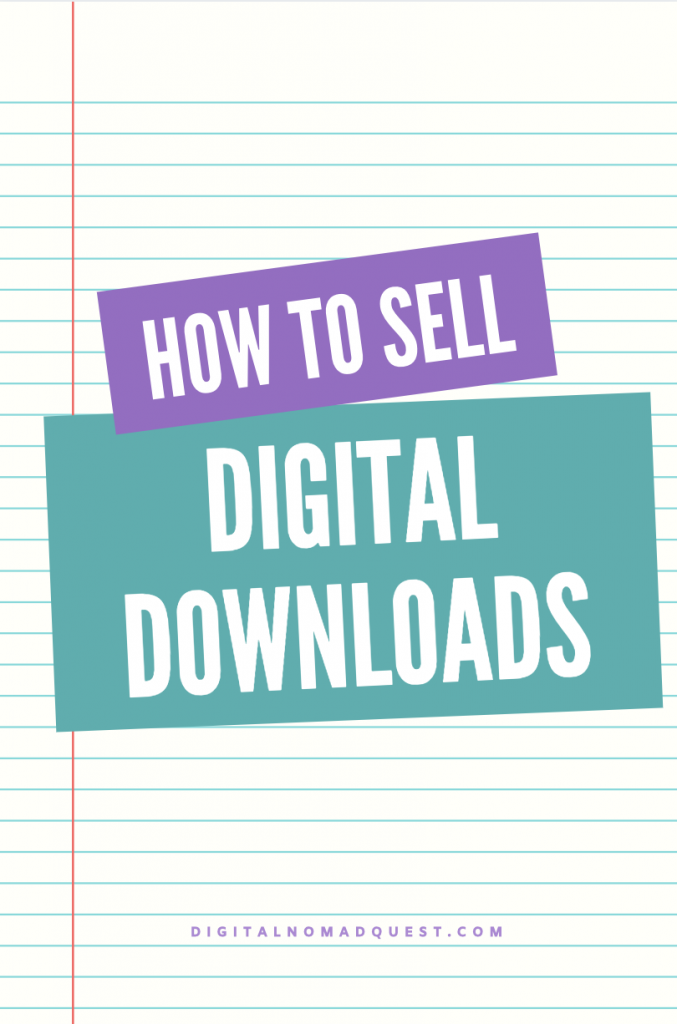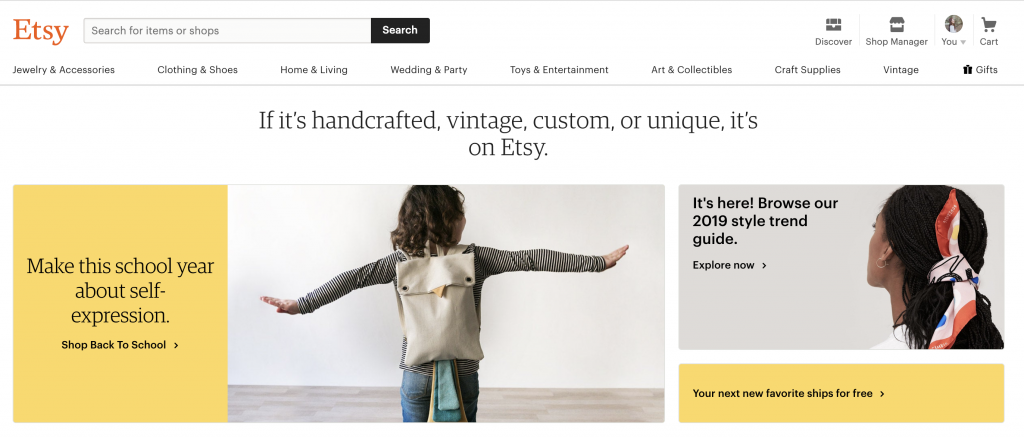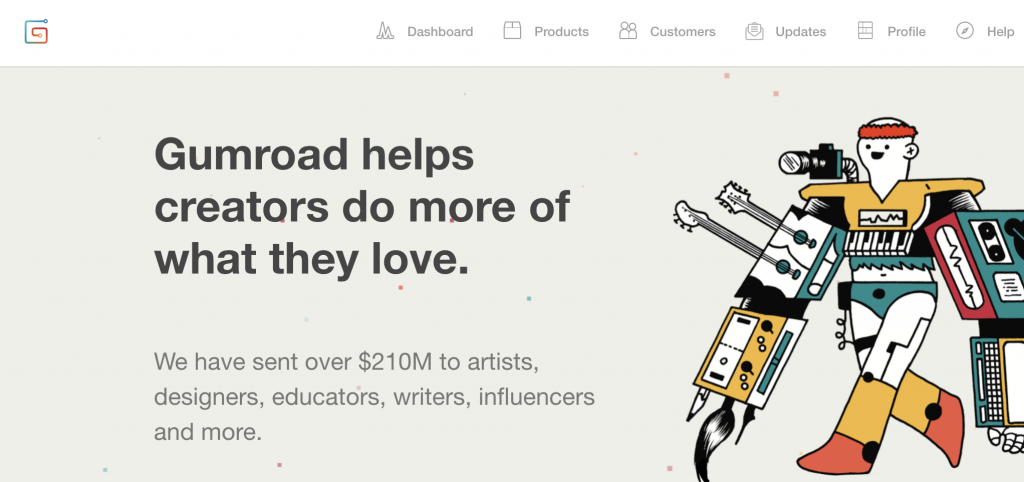Selling digital products can be extremely lucrative and low maintenance. Because of the digital nature of these products, you don’t have to hold inventory or worry about holding costs. Everything can be done online. I want to share with you how to create and where to sell digital products using your personal blog as it is a great way to earn extra income online.
So let’s first talk in-depth about the reasons for selling digital products.
Why Should You Sell Digital Products On Your Personal Blog?
No Physical Inventory
When comparing a business that specializes in digital products to a business that sells primarily physical products, inventory is one of the biggest differences. As a seller who focuses on digital products, you don’t have to have any knowledge of inventory. In fact, there’s no inventory to speak of. The same product can be sold dozens of times without you ever having to worry about replenishing or running out of stock.

Low Maintenance
For sellers, digital products are extremely low maintenance. When selling digital products, customers generally have less questions and less time is spent on the customer service aspect of your business. Many digital sellers spend only around 1-2 hours on customer service per week.
This being said, the amount of customer service required will depend on the individual products you sell. Simple downloadable files such as PDF ebooks tend to be very low maintenance, while products such as WordPress themes and plugins may require an added amount of customer service.
Global Customers
When selling physical products, things like shipping costs and customs will often dictate where you can and can’t ship your products. Digital products can be sold to customers all over the world without having to deal with shipping costs. Since this will cut shipping costs down to nothing, it not only saves you money but time as well.
Minute Start Up Fees
One great thing about digital products is that, in general, they can be created and distributed for extremely low costs. For example, you launch your first product, a PDF ebook. You could easily create the ebook for free using a free software such as OpenOffice or Microsoft Word. However, You may also want to hire a designer to create your book’s cover; you can do this for relatively cheap on outsourcing platforms such as Fiverr or Upwork.
How to Create and Sell Digital Products on Your Personal Blog
Different Types of Digital Products To Be Sold
There are a wide variety of products that can be sold digitally and a number of relevant possibilities for each product niche. Here are a few possible digital products that you can sell:
- E-books
- Printables
- Premium membership content
- Music and audio files
- Software and add ons
- Website templates and blog themes
- Icons, PNG files, paint brushes etc. for graphic designers
- Stock photography
Where Can I Sell Digital Products?
Aside from selling products directly off of your blog page, you can also opt to merely advertise your product on your blog, but redirect buyers to external websites to make their purchases.
Etsy is what Sharon uses for selling digital products. She makes a lot of passive income through selling on this platform as many users are on that marketplace. Check out her course at The Etsy Entrepreneur if you want to learn how to make money passively online through digital downloads!
Selz is an ideal place for anyone hoping to sell artwork, music, ebooks, software and many other digital products. Selz is particularly appealing to moviemakers, as it supports files of up to 4GB in size, which is a much larger size than is supported by most other sites. It also has a WordPress plugin, and each account on the site comes with a complimentary Facebook store account; each of these stores have a built-in DM (direct messaging) feature.
This site provides a number of awesome benefits including audio and video previews, PDF stamping, and “pay what you want” pricing. In addition, it also has no bandwidth or storage limits for you to adhere to.
Appealing to anyone who wants to sell digital products, SendOwl is a versatile platform. However, it seems to be particularly useful to those looking to sell ebooks, PDF files, and software. We say this because SendOwl has a unique PDF protection feature that automatically stamps the customer’s email and name onto each download. It also allows the seller to inform the clients of updates and to install them for free.
Themeforest is the most popular place for buying and selling things related to website and website building: website templates, marketing themes, HTML code, and plugins. The site’s store management area is laid out in an easy-to-navigate fashion and top sellers are said to make over $1 million using the site. In addition, Themeforest allows you to showcase product demo and allows customers to contact you and view/comment on your products.
Gumroad is a one stop shop (so to speak) for creators to sell their work directly to buyers. Although Gumroad is ideal for selling digital products, it also allows you to sell physical goods if you have any, and offer your customers coupon codes and fun discounts. You can also Sell in various currencies or have customers “pay what they want”.
Zipsell is great for sellers with Amazon stores. It helps users handle payments using stripe and sends customers secure Amazon S3 links that link to their downloads and time out after a certain amount of time, both for their security and your product’s. It gives users a plethora of sales related information including how much was made within the last week, month, and year.
What Software Can Protect My Digital Goods?
The best products are protected. Luckily, protecting your digital products is a relatively pain-free goal, as there are a number of great services and subscriptions that provide all-around protection.
An app, Charge Rabbit lets users implement recurring billing, which is necessary in order to sell their digital products as a subscription service.
Photolock allows users to have peace of mind in regards to the protection of their digital products. For extra protection for visuals such as stock images, Photolock can implement watermarks and source codes. Watermarks are great for sellers, as they stop unauthorized users from using and/or copying their content.
When Is The Best Time to Launch The First Product?
Many potential sellers struggle with trying to figure out when to launch their first product. They also tend to ask if they need to have a loyal, preexisting audience or if a product can still be successful without one.
While it’s definitely true that having an established audience makes it easier to start selling products, it doesn’t mean that you have to wait until you have hundreds of thousands of subscribers before you create your debut product. In many cases, sites with low traffic still do well when they start selling. When it comes to selling a product, even products that only sell a hundred or so per week prove to be beneficial and worth the investment time.
To successfully sell a product to a small audience, it’s important to have a defined target audience and that your product will suit the needs of the majority of that audience.
How To Create Digital Products
Step 1: Choosing a niche.
Before you download fancy software for creating products, you need to decide which type or product you want to create. This begins with deciding on a niche -a subcategory of a larger category- that will be both profitable and fun for you, the creator. So, to get started, choose a general category.
A few of the most popular categories include:
- Health and wellness
- Weight loss/ diet
- Electronics/ technology
- Parenting
- Relationships and dating
- Travel
- Music and entertainment
Even though we’ve listed a few of the best categories, the best thing to do is conduct personal market research. In other words, ask questions and receive answers! Here are a few of the most important questions to ask about your potential niche.
- Is it compatible with digital formats?
- Is there any competition in this niche and particular product format?
- How extensive is the audience?
- Are people conducting searches for information on this niche?
- Is it possible to create and sell different products in this niche?
Step 2: Brainstorming a great product
The determining factor in a product’s success is, essentially, whether it solves a problem. Again, some research needs to be conducted to decipher potential problems that your product could answer. Here are the questions to ask.
- What major challenges do potential customers face?
- Are there any particular situations that cause those in your niche to seek answers?
- What changes would your audience like to see in their lives?
Answering the questions above will help you pinpoint the opportunities within a niche, which is the goal- after all, any product that solves a problem is one that customers want.
Here are a few handy research tips.
Research Tip #1: Model Successful Products
It’s easy to benefit from the success of those who came before you – even in regard to the creation of digital products. Those who have made a business creating digital products have:
- Determined what their audience wants – what challenges have they addressed?
- Created a product directed at their audience – what are the key benefits they hope to offer?
- They’ve created beneficial sales material to go with the product – What price have they settled on?
Study the example of other but be sure not to copy it. Not only is copying another’s idea unethical, but it can also get you into legal trouble. As a bonus, creating your own content will help you create future content, as it gets both sides of the brain working together and improves your innovative thinking.
Research Tip #2: Utilize Forums
Forums are virtual communities with roots in specific niches. They are a great place to see for yourself what people want. Here, people ask questions, talk about their feelings and problems, and look for awesome solutions. When you find these forums, feel free to join them.
Forums of virtually any niche can be found by doing a quick Google search. Search the word “forums” and the name of whichever niche you’re interested in. Facebook groups can also be great places to interact and do research. Once joined, however, don’t try to sell people your products. Once you’re an active member of the community, the sales part of your goal will fall into place.
There are a number of useful websites to help you locate relevant forums, should you want to take a more direct approach to your search. A few good websites include Find A Forum and Reddit.
Step 3: Creating A Product
Now the fun part- creating your best selling product. Products can be created one of two ways: DIY or outsourced. DIY essentially means that you, as the creator, creates all of your products yourself, while outsourced means that your products are created using your ideas but the “physical labor” is given to others to do.
Although DIYing is much cheaper, those with experience in your given niche may provide you with resources and expertise that you may lack should you take on the project yourself. This being said, as mentioned, outsourcing can be pricey, with large companies and freelancers both wanting to be paid for their time and knowledge (as they should be!).
If you’re wanting to cut the cost a bit, you may want to consider purchasing a software and allowing your “employee” to use it to create your product. Although this isn’t a must and is relatively unheard of, it can be an added bonus and will be much appreciated. When going this route, though, be sure that the person you hire to create your content is familiar with your chosen software.
Creating and selling digital products can be extremely rewarding. However, a successful online-only business requires a bit of planning and strategic moves, as well as a great deal of patience and plenty of time to invest. This being said, a variety of problems and obstacles can arise, as well as a generous amount of confusion. With any luck, however, we’ve given you enough information that you should run into very few problems.
So, what are you waiting for? The online community is your oyster. And your products? Soon to be the pearl. All you have to do is get started!
If you want guidance on building and selling your digital products, check out the Etsy Entrepreneur for a full blueprint on making passive income via digital downloads.





